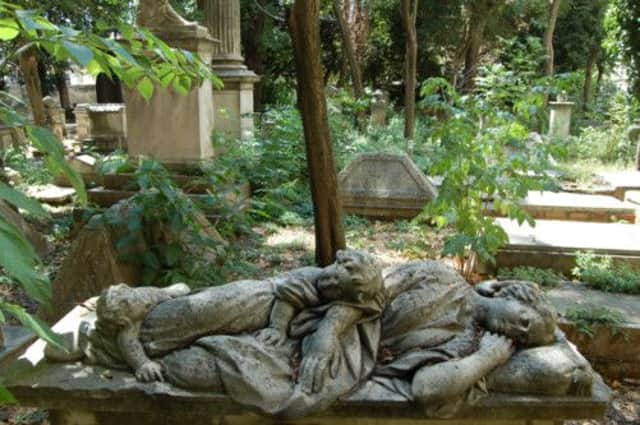Great Scots’ Italian burial site ‘falling to ruin’


The graves of Whig politican Francis Horner and novelist Tobias Smollett at Livorno’s Protestant cemetery lie in disarray, among undergrowth and shattered graves, visited by fewer than 100 people a year.
The alarm over the 17th-century cemetery’s state was raised by five local volunteers, who yesterday handed to a local museum a broken marble relief sculpture of Horner which once adorned his tomb, but was found in pieces in the grass.
Advertisement
Hide AdAdvertisement
Hide Ad“This is one of the most important Protestant cemeteries in the Mediterranean, yet it is decaying after being abandoned by Italy and the British community in Italy,” said Matteo Giunti.
Horner, an anti-slavery MP, died in 1816 aged 38 after travelling to nearby Pisa in a vain bid to regain his health.
His tomb stands yards from Smollett’s, the Glasgow University student and novelist who retired to Italy and died in 1771, after inspiring Charles Dickens who later visited his grave.
Closed since 1839, the cemetery contains 500 graves of non-Catholics, recalling Livorno’s past status as a free port which attracted foreign merchants, including Scots. They imported fish and went on to build their own Presbyterian church in the town, which was nicknamed Leghorn, in 1845.
Known in Italy as the Old English Cemetery and considered the oldest of its kind in the Mediterranean, the site was damaged by Allied bombing in 1943 and left victim to looters for three years. “Marble and iron were stolen and kids even stole bones from open graves,” said Mr Giunti, a former pilot who leads the volunteers who have maintained the cemetery for four years. In 1949, the British consulate struck a deal with a local charity for upkeep, but Mr Giunti claimed it only tidied the place when the consul visited.
“Someone tried to close the graves after the war, but got bits of marble mixed up,” he added. “The lid on Horner’s tomb was holed and plants started growing in it, making damage worse.”
The relief of Horner was done by sculptor Sir Francis Chantrey, whose statue of Horner is in Westminster Abbey.
“We thought it was lost, only to find it in the grass in three pieces,” said Mr Giunti. “We hid it in the cemetery, because we were scared of it being stolen, before the UK consul approved the transfer to the museum.”
Advertisement
Hide AdAdvertisement
Hide AdHe said Smollett’s grave was also missing marble and its fence. “But the inscription is still legible, which is more than you can say for many of the graves.”
He appealed for help in saving the cemetery, which is also at risk from cypress trees which are in danger of crashing down.
“This place does not even appear on a tourist map,” he said. “It would be great to find charities who recognised just how important this place is.”
Profiles
Born in Edinburgh in 1788, Whig politican Francis Horner is best known for helping to found literary journal the Edinburgh Review, which is published to this day.
He entered parliament in 1806 and campaigned against slavery and for Catholic Emancipation – which was enacted in 1829 – whilst also working as a journalist and political campaigner.
He died in Pisa aged 38 after prolonged ill-health, and is honoured by a statue in Westminster Abbey.
Tobias Smollett was born in 1721 in present-day West Dunbartonshire, studied at Glasgow University and qualified as a surgeon before travelling to London to seek his fortune as a dramatist.
His picaresque novels The Adventures of Roderick Random, The Expedition of Humphry Clinker and The Adventures of Peregrine Pickle won him acclaim and established him as a leading literary figure.
He also travelled to Italy in an attempt to cure his ill-health, but later died in Livorno.